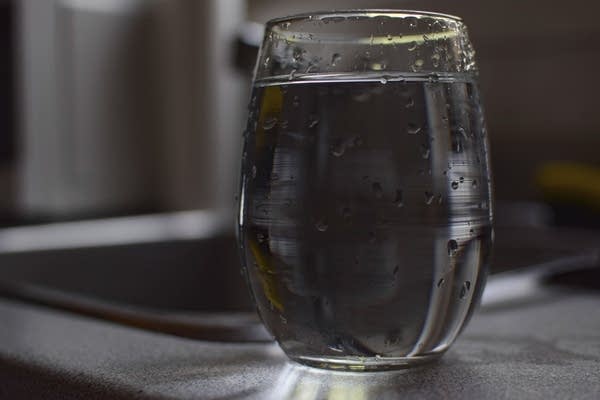Camp Ripley to test nearby residents’ water for 'forever chemicals'

Go Deeper.
Create an account or log in to save stories.
Like this?
Thanks for liking this story! We have added it to a list of your favorite stories.
Updated: 9:05 a.m.
Officials at Camp Ripley in central Minnesota are testing the drinking water of some residents who live outside the camp’s borders for so-called “forever chemicals.”
The camp has been testing its own water for the past several years for PFAS, found in firefighting foam that was used for testing and training at the military training facility until 2017.
But this marks the first time officials have expanded testing for the chemicals beyond the camp’s boundaries, as the U.S Department of Defense deals with a massive PFAS contamination problem at military bases across the U.S.
“Obviously, we don't know what we don't know until we find out that it's dangerous, and then we’ve got to react,” said Brig. Gen. Lowell Kruse, assistant adjutant general for the Minnesota National Guard and senior commander at Camp Ripley. “That's kind of where we're at with this issue.”
Turn Up Your Support
MPR News helps you turn down the noise and build shared understanding. Turn up your support for this public resource and keep trusted journalism accessible to all.
PFAS, or per- and polyfluoroalkyl substances, are a large group of compounds found in a variety of consumer products. They don't degrade in the environment and are linked to a broad range of health issues, including low birthweight and kidney cancer.
For decades, military bases and airports used foam containing PFAS to suppress fires, as well as for training and testing. The foam is still kept on hand for emergencies at Camp Ripley and other bases, until the Defense Department finds a replacement.
At military sites across the country, PFAS from the foam leached into the soil or groundwater, in some cases exposing service members, their families and others to dangerous levels of the chemicals in drinking water.
“They have been consistently finding it, and bases across the country having neighboring communities being contaminated by those bases that they live near,” said Jared Hayes, a senior policy analyst with the nonprofit Environmental Working Group.
Eight areas of concern
Camp Ripley, a state-owned military reservation north of Little Falls, Minn., serves as the primary training site for the Minnesota National Guard. It stretches over 53,000 acres next to the Mississippi River.
National Guard officials began looking into the historic use of PFAS-containing foam at Camp Ripley in 2019, Kruse said. He said they identified eight areas within the camp where foam might have been stored or used in training.
Testing revealed that one of the sites had PFAS-contaminated soil. Kruse said. Seven had groundwater with PFAS levels higher than a level thought to be safe for vulnerable populations, including infants.
“That spurred on our current effort of reaching out to our neighbors that might share that groundwater, and making sure that we understand if their water is safe to drink or not,” he said.
The drinking water at Camp Ripley is tested frequently and has been found to be safe, Kruse said. But its wells draw from deep groundwater, while some neighboring property owners have shallow wells that could be more susceptible to contamination, he said.
Officials are reaching out to about 30 property owners who live within a quarter-mile of the camp’s boundaries.
“We know that the water table flows away from these homes toward the Mississippi River,” Kruse said. “So we're confident that the homes that we've identified are the ones that are probably the most vulnerable and should be tested first.”
Seeking transparency
Camp officials held an informational meeting, then went door to door asking residents for permission to test their water. The results should help determine the extent of the groundwater contamination, Kruse said.
“More importantly, it will help us ensure that the water that they may be consuming is safe,” he said.
Kruse said the water samples will be collected this week and sent to a federal lab. He expects the results could take up to 12 weeks.
Camp officials will notify property owners of the results. If any show high levels of PFAS, officials will provide them with bottled water or an alternative water source.
Kruse said they’re trying to be transparent about the testing process and the results.
“We’ve got a great level of trust I think with our neighbors, and I don't want to lose that,” he said.
More testing needed
The 2022 Defense Authorization Act included $500 million for PFAS testing at active and former military installations, including areas adjacent to and downstream from those sites.
Many military bases are in rural areas, and people who live nearby have their own private wells, Hayes said.
“They might not know that the water they're drinking in their home is contaminated,” he said. “So more of this testing is needed across the country.”
In addition, the U.S. Environmental Protection Agency is considering setting federal drinking water standards for several PFAS that would be significantly lower than the current advisory level of 70 parts per trillion, set in 2016.
If those lower standards are adopted, they could be challenging and costly for both military bases and city water systems to meet, Kruse said.
Correction (May 9, 2023): An earlier version of this story misspelled Jared Hayes’ name. The story has been updated.



